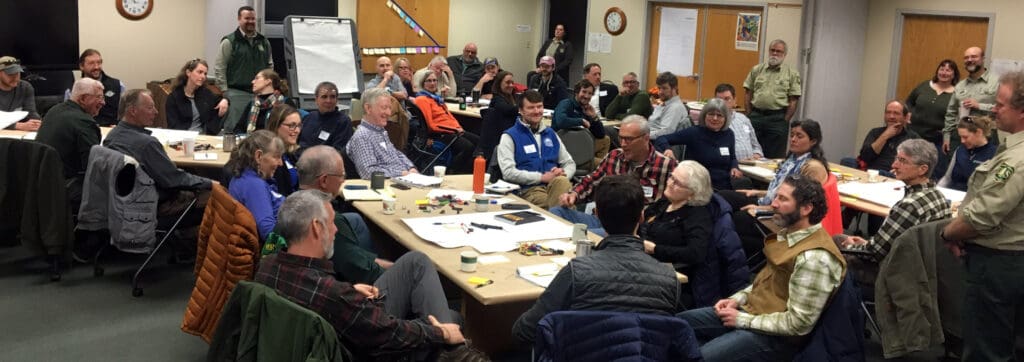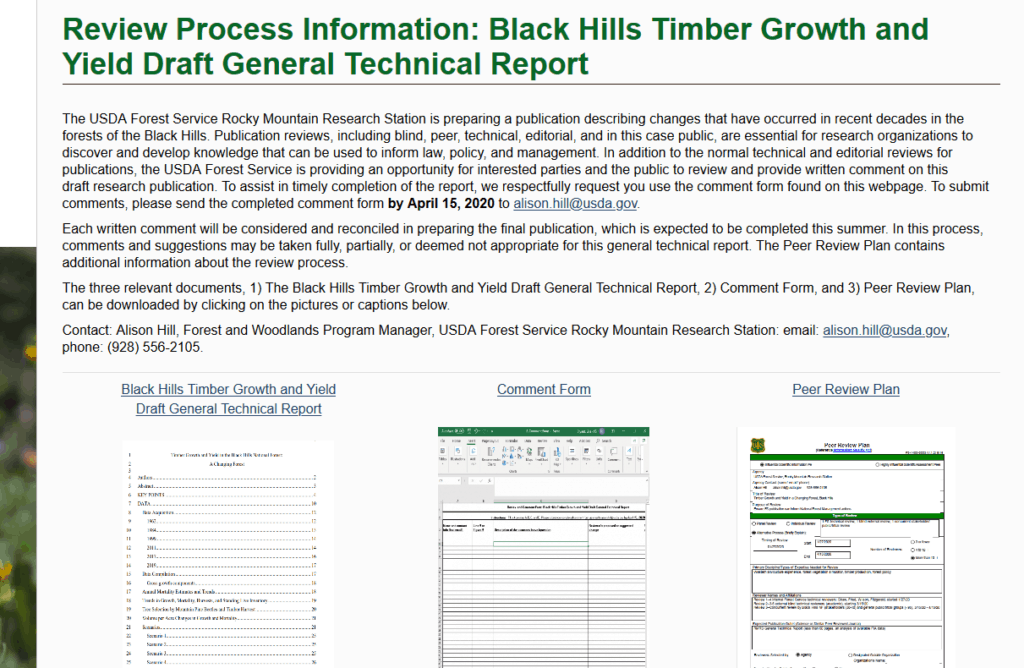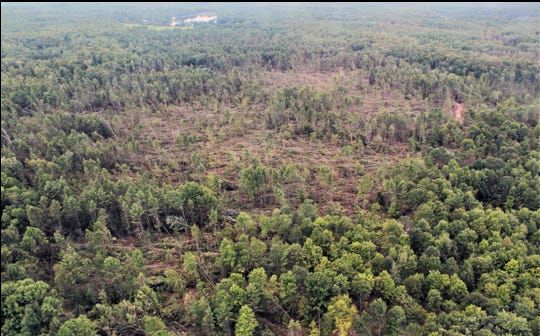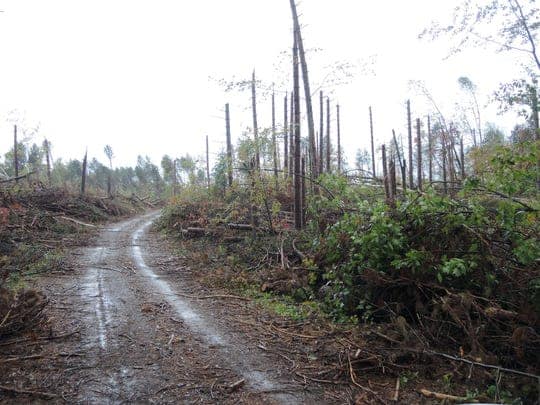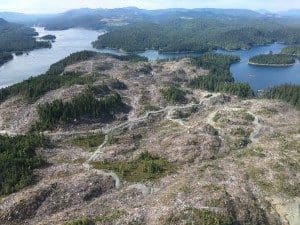
We recently looked at the Biological Assessment of Northwest Forests, and the options for proceeding with revising forest plans currently governed by the Northwest Forest Plan. Some of those options involved amendments to existing plans prior to plan revision. I voiced support for amendments that would provide the ecological conditions needed for at-risk species. I thought this might be an example to look at for how that might go.
The Stanislaus National Forest is not in the area covered by this assessment. Its forest plan was originally completed in 1991, but it was amended by the Sierra Nevada Forest Plan Amendment (or Framework) in 2004, which is roughly analogous to the Northwest Forest Plan in that it had its origins in the work done to protect the California spotted owl (it has its own complicated political and legal history). Now the Stanislaus is proposing an amendment for a part of the Forest in conjunction with what it calls the Social and Ecological Resilience Across the Landscape (SERAL) project.
The Forest has identified a need to change the forest plan based on new information about the California spotted owl, as published in 2019 by the Forest Service in the “Conservation Strategy for the California Spotted Owl in the Sierra Nevada.”
In order to fully adopt and implement the management direction described in the Conservation Strategy and increase landscape resiliency as guided by NRV the Stanislaus National Forest’s forest LRMP must be amended. The proposed forest plan amendments would allow the SERAL project’s proposed landscape restoration treatments to best meet the purpose and need of the project and implement the guiding principles of the 2019 California Spotted Owl Conservation Strategy. The proposed amendments include standards and guidelines which will provide some immediate stability for individual owls while allowing forest management the ability to conduct treatments designed to help develop resilient habitat conditions that provide CSO conservation in the long term.
Unfortunately, the CSO Conservation Strategy was apparently written for a narrower purpose than its name implies:
The California spotted owl (Strix occidentalis occidentalis) Conservation Strategy is a strategic framework for active conservation of the California spotted owl on National Forest System lands in the Sierra Nevada.
It appears to be something less than a scientific strategy. By limiting the focus to “active conservation” it has failed to address the central debate about managing spotted owl habitat regarding when active management should even be used. Passive management is one obvious alternative to this amendment that the Forest is going to have to address in its amendment process. But I looked at some of the proposed changes in the forest plan.
The current plan designates spotted owl Protected Activity Centers (PACs) as management areas in the forest plan (which could be changed only by amending the forest plan). This proposed amendment would replace current management areas with guidelines to designate PACs later “in advance of any management activities that would reduce CSO nesting and roosting habitat quality.” The guidelines include criteria for delineating and changing PAC boundaries.
My opinion: This is not a coarse filter management strategy based on vegetation because it depends on actual owl presence based on surveys, or one might call it “condition-based.” If owl presence is the kind of thing that changes frequently, this may be a reason to not designate permanent management areas at the plan level. However, this creates the risk of cutting the public out of the part of the process that actually determines the locations for management. The plan is no longer saying, “here is where we’ll manage for owls,” but instead, “we’ll manage for owls where we think we need to manage for owls, trust us.” The criteria must be explicit and objective enough to fully evaluate at the plan level, and the decisions about whether and how to apply them at the project level must include the public. Given the importance that surveying would take on, there is no excuse for these being guidelines rather than standards. It seems to me that the certainty of owl protection, and therefore the viability of the species, is going to be reduced.
There are a lot of new plan components in the amendment, and the CSO Conservation Strategy is page-referenced for most of them. That’s how any conservation strategy should be used, so maybe this is a good example of that. Except that it strikes me that this “conservation strategy” may have actually been written as a “drop-in” amendment to be used this way (which makes that kind of cross-referencing a lot easier). This is similar to what would happen if plan amendments were developed that could be later “dropped in” to forest plan revisions. The problem is that if the “conservation strategy” is already a management-influenced document and not a science document, there would still need to be a reference to the actual scientific basis for these conservation recommendations that are being adopted.
Anyway, this project/amendment will be worth watching as it applies the 2012 Planning Rule diversity requirements to California spotted owls. And it may be setting some precedents for what could happen regarding how to plan for management of spotted owl habitat on other national forests.
